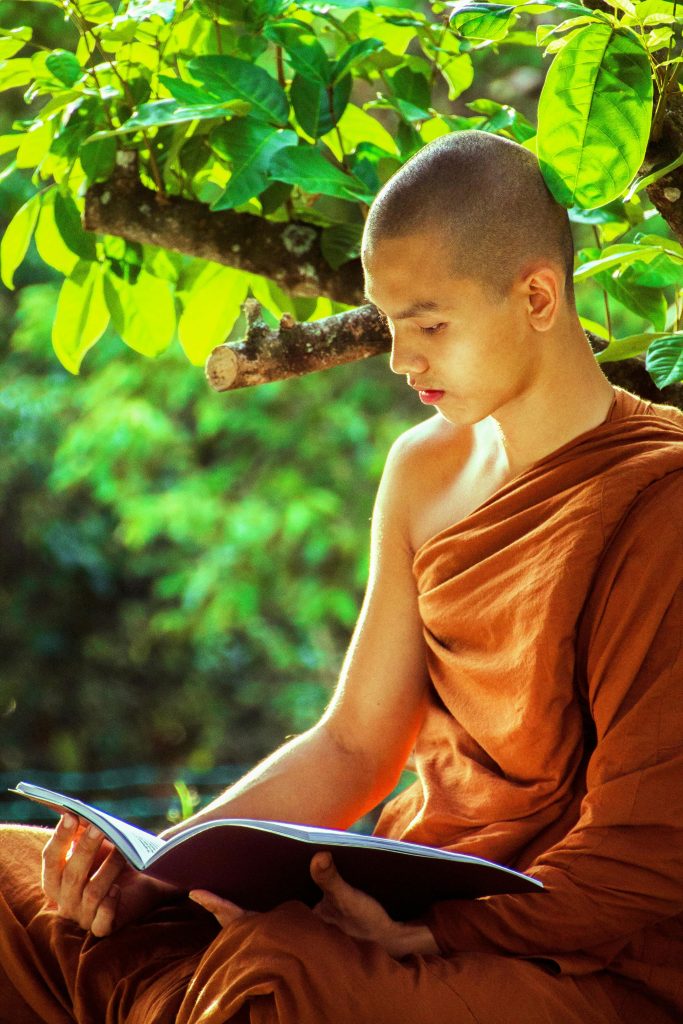The Buddhist tradition is one of the oldest in the world. Although it originated in Southeast Asia, the buddhist religion is no longer specific to one region or people. On the contrary, there are thousands of different practices, religions and cultures across the globe that consider themselves Buddhist. There is no one single ordination for Buddhism that is recognized worldwide. On the contrary, each monastery decides on what makes an individual eligible for ordination.

The Path to Becoming A Monk
Although the road to becoming a monk varies from temple to temple, there are similarities within the process. The first step is to research temples which most closely align with your needs and wishes. Some things to consider are what their basic tenants and rules are and who they may have as teachers and spiritual leaders. Next you will want to familiarize yourself with what the processes are to getting your ordination status. You’ll want to understand how long the training is and what the meditation practices are. It’s also a good idea to know what types of religious texts you’ll be studying.
Sometimes a novice will go through a special ceremony on their induction where they receive robes and a special blessing. One thing common among many Buddhist monasteries is the commitment to the Three Refuges and the Ten Precepts. The ‘Three Jewels’ mantra is spoken three times and goes as follows:
The Three Jewels
I take refuge in the Buddha
I take refuge in the Dahmma
I take refuge in the Sangha
The Ten Precepts
1. Panatipata veramani sikkhapadam samadiyami
(I undertake to abstain from harming or taking life).
2. Adinnadanna veramani sikkhapadam samadiyami
(I undertake to abstain from taking what is not given).
3. Abrahmacariya veramani sikkhapadam samadiyami
(I undertake to abstain from any sexual contact).
4. Musavada veramani sikkhapadam samadiyami
(I undertake to abstain from false speech).
5. Sura meraya majjapamadatthana veramani sikkhapadam samadiyami
(I undertake to abstain from the use of intoxicants).
6. Vikalabhojana veramani sikkhapadam samadiyami
(I undertake to abstain from taking food after midday).
7. Nacca gita vadita visuka dassana veramani sikkhapadam samadiyami
(I undertake to abstain from dancing, singing, music or any kind of entertainment).
8. Mala ganda vilepana dharana mandana vibhusanatthana veramani sikkhapadam samadiyami
(I undertake to abstain from the use of garlands, perfumes, unguents and adornments).
9. Uccasayana mahasayana veramani sikkhapadam samadiyami
(I undertake to abstain from using luxurious seats).
10. Jatarupa rajata patiggahana veramani sikkhapadam samadiyami
(I undertake to abstain from accepting and holding money).
Ordination to Become a Monk
Once a novice has had sufficient training in the monastery, they may be granted ‘empowerments’ or the ability to lead meditations and religious practices. To reach this level a monk must be familiar with the Buddhist texts and precepts of the monastery. They must also show keen interest in furthering their dedication to the Dharma and Buddhist practices.
In western culture, it is common for non-religious people to guide meditations without any official training.
Officiate a Buddhist Wedding
In Western culture there is a significant rise in alternative forms of religious ordination.
If you would like to get ordained online to legally officiate a Buddhist wedding within the United States, the process is quite simple. There are a number of online organizations where you can sign up for free and become a legally recognized wedding officiant. American Marriage Ministries, for example, allows people of all faith backgrounds, including Buddhists, to become a part of their growing ministry. It only takes a couple minutes to sign up for ordination.
Once you are a recognized minister with AMM you can serve as a wedding officiant for your friends, family and community. If you would like, you can even set up your own officiating business and perform different religious rites such as weddings and funerals. Hopefully this article answered most of your questions about how to get Buddhist Ordination. Namaste.
– Bernard Paul